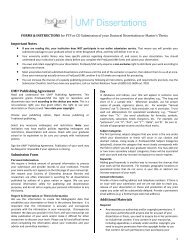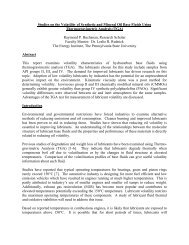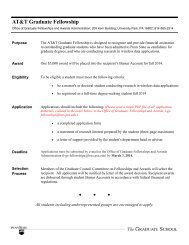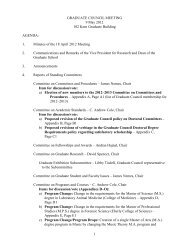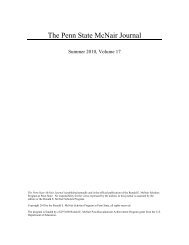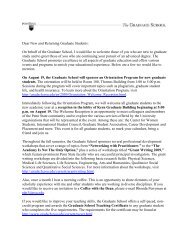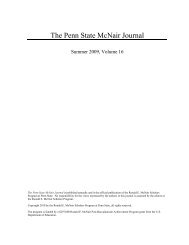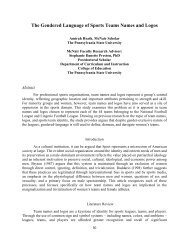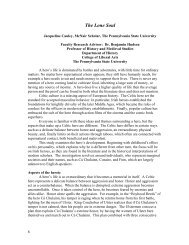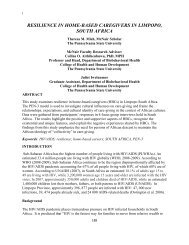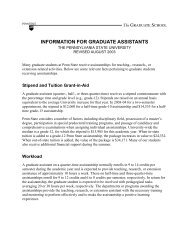bubble pump modeling for solar hot water heater system design
bubble pump modeling for solar hot water heater system design
bubble pump modeling for solar hot water heater system design
Create successful ePaper yourself
Turn your PDF publications into a flip-book with our unique Google optimized e-Paper software.
Figure 3 : Thermosyphon Solar Hot Water Heating System 2<br />
A <strong>bubble</strong> <strong>pump</strong>, also known as a geyser <strong>pump</strong>, STWH <strong>system</strong>, as shown in Figure 4, is an<br />
improved version of a closed loop thermosyphon <strong>system</strong>. It is not an active <strong>system</strong>, but works as<br />
one. The unique <strong>design</strong> of the <strong>system</strong> runs like a <strong>pump</strong> but does not require mechanical work as<br />
input to run the <strong>pump</strong>. When heat is added to the <strong>system</strong> liquid <strong>water</strong> changes into two phases,<br />
liquid and vapor; which creates a two-phase flow. The buoyance of gas creates a <strong>pump</strong>-like<br />
effect that pushes boiling <strong>water</strong> to a higher elevation. Unlike the thermosyphon <strong>system</strong>, the<br />
position of the tank does not depend on the <strong>solar</strong> panel. With an initial hand <strong>pump</strong> to get the<br />
pressure in the <strong>bubble</strong> tank to be in vacuum, cold <strong>water</strong> enters to the bottom of the panel. Similar<br />
to thermosyphon <strong>system</strong>, the <strong>water</strong> heats up through natural convection and <strong>hot</strong> <strong>water</strong> rises to the<br />
top of the panel due to buoyancy. Hot <strong>water</strong> leaves the panel through lifting tubes and enters a<br />
second reservoir, which then drains down to the top of the tank and creates a pressure difference<br />
in the <strong>system</strong>. Due to the pressure difference, the cold <strong>water</strong> in the tank will rise up into the<br />
panel. When the <strong>water</strong> in the panel is overheated, the pressure in the <strong>system</strong> is unstable, then the<br />
valve of the header at second reservoir opens, this then is connected to a third reservoir and<br />
allows vapor gas to escape the closed <strong>system</strong>. The third reservoir is connected to the entrance of<br />
cold <strong>water</strong> in the panel. Once the vapor gas condenses, it flows together into the panel again with<br />
the cold <strong>water</strong>. By doing so, it also preheated the cold <strong>water</strong> entering the panel. The <strong>bubble</strong><br />
<strong>pump</strong> <strong>system</strong> also adds in an antifreeze working fluid to prevent freezing. The most commonly<br />
used antifreeze fluid is a mixture of propylene glycol and <strong>water</strong>. Although the <strong>bubble</strong> <strong>pump</strong> is<br />
slightly more costly than a thermosyphon <strong>system</strong>, it does prevent freezing, overheating, as well<br />
as reverse-thermosyphon effects.<br />
There are several parameters of the <strong>bubble</strong> <strong>pump</strong> which can be adjusted to optimize the STWH<br />
<strong>system</strong>. These parameters include: the diameter of the lift tube, the number of lift tubes, and the<br />
material of the lift tube. Slug flow is the optimal operating two phase flow regime <strong>for</strong> fluid<br />
<strong>pump</strong>ing (White, 2001), but because this <strong>system</strong> will change dynamically with <strong>solar</strong> input<br />
fluctuations, it will be difficult to <strong>design</strong> the <strong>bubble</strong> <strong>pump</strong> to stay in this regime. For a given<br />
<strong>system</strong> operating temperature, previous studies have shown that a smaller than optimal diameter<br />
lift tube will experience churn flow and a much higher than optimal diameter tube will produce<br />
bubbly flow (White, 2001). As the temperature of the <strong>solar</strong> flat plate collector changes<br />
throughout the day, the two phase flow regime in the lift tube changes between bubbly flow, slug<br />
173



